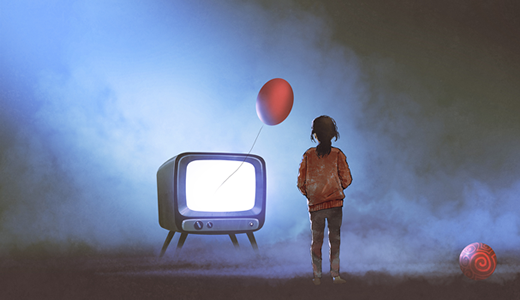Halloween is a big deal in the United States. The average American will spend $185.50 for the hallo-day, including $76 on candy.
But we’ve got another major day to commemorate this week as well (without so many bite-size candy bars, presumably): On Nov. 1, the MPAA ratings system will turn 50. And to mark the occasion, the Motion Picture Association of America told us just how its ratings have shaken out over the last five decades. The big takeaway? America’s theaters have hosted a lot of R-rated movies.
Of the 29,791 films rated by the MPAA since 1968, more than 17,000 of them—57%—have been rated R. That’s obviously by far the most common rating, even though your average PG and PG-13 film earns about twice what the average R-rated film does. The PG rating (which includes the short-lived M and GP ratings, too) lands as America’s next-most popular, with 5,578 films in that category—less than a third the number of R-rated flicks.
In today’s more crass movie culture, it’s easy to forget that even PG—about as family-friendly a rating as you can get these days and still have some semblance of drama—stands for “parental guidance suggested.” Take Smallfoot, a fairly sweet, innocuous movie that our intrepid reviewer Bob Hoose said had some potentially “anti-faith” messages nuzzled inside. He’s not alone in pointing that out. Stand To Reason’s Alan Shlemon says the flick “mocks religious belief, and, in my opinion, it’s clearly targeted at Christianity.”
Of course, if the creators of the new faith-based company Kingdom have their way (presumably), Hollywood may have a new family-friendly player in town. Jon and Andy Erwin want their studio to be the next “Christian Pixar” or “Christian Marvel.”
But movies aren’t as buzzy as they used to be—not compared to the rapidly growing and changing world of television. The small(er) screen sure doesn’t look like it used to, what with viewers checking out of traditional broadcast television models and turning to on-demand streaming services. NBC’s the latest network to try and adapt, announcing a 24-hour streaming news service to cater to cord cutters. (Not that watching news for 24 hours is necessarily a good thing: ABC News is now offering tips on how to cope with today’s anxious headlines.)
And that’s not the only change we’re seeing on television. A new study by the activist group GLAAD finds record numbers of LGBTQ characters on TV today—which coincides with Nielsen’s own announcement that it has begun tracking viewership in same-sex households. (Gay and lesbian couples, the service tells us, particularly loved CBS’s Murphy Brown reboot and the NBC sci-fi mystery Manifest.) Meanwhile, television actors and actresses continue to make, well, a lot more money than I do. Modern Family’s Sofia Vergara banked $42.5 million between June 1, 2017, and June 1, 2018, topping the list of highest-paid TV stars. Jim Parsons of The Big Bang Theory was the highest-earning male, banking $26.5 million. Indeed, five stars on that geek-oriented sitcom topped $20 million: Big bang indeed.
We all know that television can get pretty salacious these days. HBO, a premium cable channel often called out for its reliance on sex scenes, has just hired an “intimacy coordinator” to help navigate such scenes. (We think that he or she will be kept plenty busy.) But shows need not have graphic nudity to cause a stir. Big Mouth, an animated Netflix series ostensibly meant for adults, unveiled an episode trumpeting Planned Parenthood—an episode that, predictably, earned scathing condemnation from pro-life organizations. Just as predictably, the blowback earned its own blowback from more progressive media watchers. (sample headline from The Daily Beast: “Critics Praise ‘Big Mouth’ Planned Parenthood Episode. Conservatives Freak Out.”)
But TV’s controversies aside, a lot of families—particularly those headed by younger parents—are looking at television as the family’s good screen, because it fosters time together—and is thus considered preferable to the more-isolating smartphone screen experience. A recent study found that nearly two-thirds of Millennial parents said they’d “rather my kid watch TV than be online,” and 62% say they’re “very worried about the time my child spends on their own device.”
Oh, and by the way, teens themselves often agree that excessive smartphone use can be unhealthy. Another study found that six out of every 10 teens thought friends were “addicted” to their phones. And 41% admitted to feeling “overwhelmed” by all the notifications they receive.But that doesn’t mean teens are putting down the phones of their own volition. They’re using them, a lot. They favor Instagram over Snapchat these days. And teens, as well as lots of other people, seem to be setting aside their Twitter accounts.
Even as the social-media landscape has been a boon to some celebrities, others are sending out a cautionary note. Jamie Lee Curtis, star of Halloween, says that Michael Myers doesn’t scare her nearly as much as social media. She told Time:
I’m terrified by social media–the obsession with our curated lives. I don’t proselytize, because I cop to it too! How quickly you can hit the little booster button that brightens you up. The idea that we can no longer look at our unvarnished selves at all. A selfie is by nature self-loving, but it’s become self-loathing.
To wrap this Halloween episode of Culture Clips up, let’s return to a time when screens weren’t the cause of anxiety and panic. No, 80 years ago, it was all about radio—specifically Orson Welles’ infamous War of the Worlds broadcast. The first half of the episode (based on H.G. Wells’ famous book) took the form of breaking news bulletins, which millions of listeners believed in those more innocent days. And some of them reportedly went a little crazy (though there’s some debate about that).
If you want to listen in to the whole episode that caused such a kerfuffle, click here. But remember: It’s only a radio broadcast.






Recent Comments